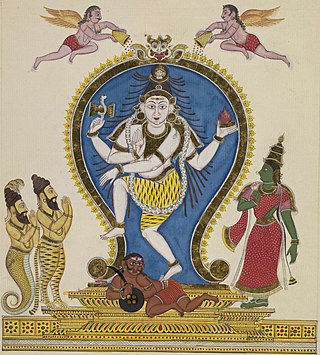
Nataraja, also known as Adalvallan, is a depiction of Shiva, one of the main deities in Hinduism, as the divine cosmic dancer. His dance is called the tandava. The pose and artwork are described in many Hindu texts such as the Tevaram and Thiruvasagam in Tamil and the Amshumadagama and Uttarakamika agama in Sanskrit and the Grantha texts. The dance murti featured in all major Hindu temples of Shaivism, and is a well-known sculptural symbol in India and popularly used as a symbol of Indian culture, as one of the finest illustrations of Hindu art. This form is also referred to as Kuththan, Sabesan, and Ambalavanan in various Tamil texts.

Kumbakonam, or Kudanthai, is a city municipal corporation in the Thanjavur district in the Indian state of Tamil Nadu. It is located 40 km (25 mi) from Thanjavur and 282 km (175 mi) from Chennai and is the headquarters of the Kumbakonam taluk of Thanjavur district. It is the second largest city in the district after Thanjavur. The city is bounded by two rivers, the Kaveri River to the north and Arasalar River to the south. Kumbakonam is known as a "Temple town" due to the prevalence of a number of temples here and is noted for its Mahamaham festival, which happens once in 12 years, attracting people from all over the country.

Rukmini is a Hindu goddess and the first queen of Krishna. In Vaishnavism, she is described as Krishna's principal queen as well as the chief of his wives in Dvaraka. Rukmini is considered as the avatar of Lakshmi and is the goddess of fortune. Rukmini is venerated primarily in Warkari, and Haridasa tradition, and additionally in Sri Vaishnavism.

Ramana Maharshi was an Indian Hindu sage and jivanmukta. He was born Venkataraman Iyer, but is mostly known by the name Bhagavan Sri Ramana Maharshi.

Semmangudi Radhakrishna Srinivasa Iyer was an Indian Carnatic vocalist. He was the youngest recipient of the Sangeetha Kalanidhi awarded by the Music Academy in 1947, a distinction he holds to this day as of 2023, probably the only musician to receive that honour before reaching 40. He had received many other awards as well, including Padma Bhushan and Padma Vibhushan from the Government of India, Rajyasevanirata title from Travancore's erstwhile ruling family, Sangeet Natak Academy award (1953), Isai Perarignar from Government of Tamil Nadu and Kalidas Samman from Government of Madhya Pradesh. He was affectionately addressed as "Semmangudi Maama" by his disciples. He was also considered the "Pitamaha" or the grand sire of modern Carnatic Music. He was conferred with an honorary doctorate by University of Kerala in 1979.

Swami Sivananda Saraswati, also called Swami Sivananda, was a yoga guru, a Hindu spiritual teacher, and a proponent of Vedanta. Sivananda was born in Pattamadai, in the Tirunelveli district of modern Tamil Nadu, and was named Kuppuswami. He studied medicine and served in British Malaya as a physician for several years before taking up monasticism.

Ānanda Mārga, or officially Ānanda Mārga Pracāraka Saṃgha, is a world-wide socio-spiritual organisation founded in Jamalpur, Munger, Bihar, India, in 1955 by Prabhat Ranjan Sarkar, known as Shrii Shrii Anandamurti. It is also the name of the philosophy and life-style propounded by Sarkar, described as a practical means of personal development and the transformation of society. It is established in more than 180 countries across the world. Its motto is Ātmamokśārthaṃ jagaddhitāya ca.
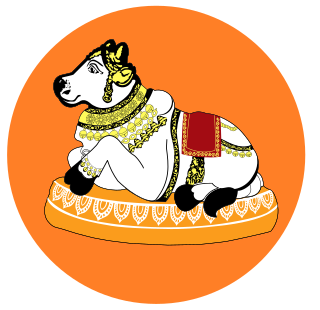
The Tirumantiram or Thirumantiram is a Tamil poetic work, written either in the 2nd century BCE and 4th century CE by Tirumular. It is the tenth of the twelve volumes of the Tirumurai, the key texts of Shaiva Siddhanta and the first known Tamil work to use the term. The Tirumantiram is the earliest known exposition of the Shaiva Agamas in Tamil. It consists of over three thousand verses dealing with various aspects of spirituality, ethics and praise of Shiva. But it is more spiritual than religious and one can see the difference between Vedanta and Siddhanta from Tirumular's interpretation of the Mahavakyas. According to historian Venkatraman, the work covers almost every feature of the siddhar of the Tamils. According to another historian, Madhavan, the work stresses on the fundamentals of Siddha medicine and its healing powers. It deals with a wide array of subjects including astronomy and physical culture.

The Sri Aurobindo Ashram is a spiritual community (ashram) located in Pondicherry, in the Indian territory of Puducherry. The ashram grew out of a small community of disciples who had gathered around Sri Aurobindo after he retired from politics and settled in Pondicherry in 1910. On 24 November 1926, after a major spiritual realization, Sri Aurobindo withdrew from public view in order to continue his spiritual work. At this time he handed over the full responsibility for the inner and outer lives of the sadhaks and the ashram to his spiritual collaborator, "The Mother or La Mère", earlier known as Mirra Alfassa. This date is therefore generally known as the founding-day of the ashram, though, as Sri Aurobindo himself wrote, it had "less been created than grown around him as its centre."
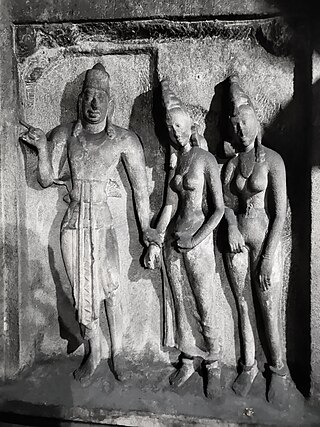
Mahendravarman I was a Pallava emperor who ruled the Southern portion of present-day Andhra region and Northern regions of what forms present-day Tamil Nadu in India in the early 7th century. He was a scholar, painter, architect, musician. He was the son of Simhavishnu, who defeated the Kalabhras and re-established the Pallava kingdom.

Dakshinamurti is an aspect of the Hindu god Shiva as a guru (teacher). He is regarded to be the personification of the supreme or the ultimate awareness, understanding, and knowledge. Dakshinamurti represents Shiva as a teacher of yoga, music, and wisdom, offering an exposition of the Shastras. He is worshipped as the god of wisdom and meditation.

The Paadal Petra Sthalam, also known as Tevara Sthalam, are 276 temples that are revered in the verses of Shaiva Nayanars in the 6th-9th century CE. The Divya Desams by comparison are the 108 Vishnu temples glorified in the poems of the contemporary Vaishnava Alvars of Tamil Nadu, India.

Nathamuni, also known as Sri Ranganathamuni,, was a Vaishnava theologian who collected and compiled the Naalayira Divya Prabandham.
Thandanthottam is a village in the Kumbakonam taluk of Thanjavur district, Tamil Nadu, India.
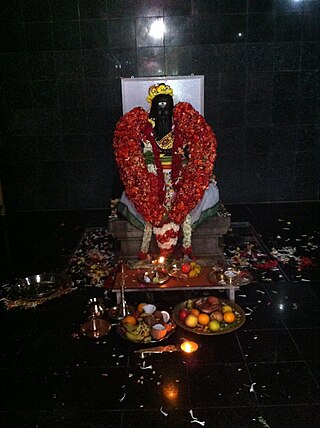
Sri Kaagapujandar or Kakabhushundi is considered to be an eminent siddha in Siddhar tradition, a saint who has reached a particularly high degree of physical and spiritual perfection. According to legends he lived around the 7th century CE. The jeeva samadhi of Sri Kaagapujandar is located at the Sornapureeshwar Temple in Thenponparapi village, near Chinna salem, Villupuram District. His birth star is Ayilyam. Sri Kaagapujandar was mentioned by Karuvoorar and author K.S.Pillai as one of the 18 siddhars.
Thycaud Ayyavu Swamikal was a spiritualist and a social reformer, the first to break customs related to caste in Kerala when caste restrictions and untouchability were at its extreme.

Sri Sabhapati Swami was born around the year 1828 in Madras, Tamil Nadu, India. Sabhāpati's writings survive in Sanskrit, Tamil, Hindi, English and German, and are notable for their rich visual depictions of the subtle body (liṅga-śarīra) and their early fusion of Rājayoga and Haṭhayoga techniques of meditation in a Vedantic and Tamil Śaivite context.
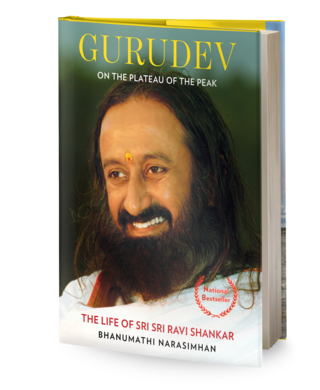
Gurudev: On the Plateau of the Peak is a biography of Ravi Shankar, a spiritual leader and founder of The Art of Living Foundation. The author of the book is his sister Bhanumathi Narasimhan.

Seetharaman Sundaram was a lawyer and pioneer of yoga as exercise, often known as Yogacharya Sundaram, and the first person to publish a handbook of yoga asanas in English, his 1928 Yogic Physical Culture. This was also the first yoga book to be illustrated with photographs. He travelled India with the bodybuilder K. V. Iyer, helping to popularise the new blend of hatha yoga and physical culture.
















